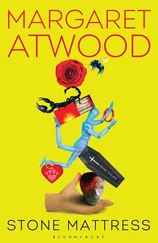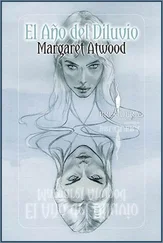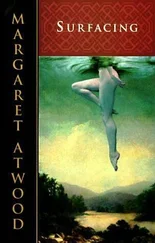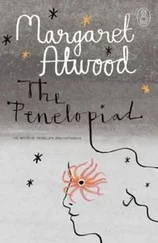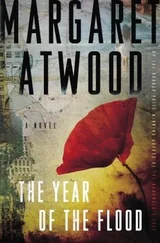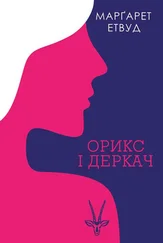Margaret Atwood - The Testaments
Здесь есть возможность читать онлайн «Margaret Atwood - The Testaments» весь текст электронной книги совершенно бесплатно (целиком полную версию без сокращений). В некоторых случаях можно слушать аудио, скачать через торрент в формате fb2 и присутствует краткое содержание. Год выпуска: 2019, Издательство: Knopf Doubleday Publishing Group, Жанр: Старинная литература, на английском языке. Описание произведения, (предисловие) а так же отзывы посетителей доступны на портале библиотеки ЛибКат.
- Название:The Testaments
- Автор:
- Издательство:Knopf Doubleday Publishing Group
- Жанр:
- Год:2019
- ISBN:нет данных
- Рейтинг книги:3 / 5. Голосов: 1
-
Избранное:Добавить в избранное
- Отзывы:
-
Ваша оценка:
- 60
- 1
- 2
- 3
- 4
- 5
The Testaments: краткое содержание, описание и аннотация
Предлагаем к чтению аннотацию, описание, краткое содержание или предисловие (зависит от того, что написал сам автор книги «The Testaments»). Если вы не нашли необходимую информацию о книге — напишите в комментариях, мы постараемся отыскать её.
The Testaments — читать онлайн бесплатно полную книгу (весь текст) целиком
Ниже представлен текст книги, разбитый по страницам. Система сохранения места последней прочитанной страницы, позволяет с удобством читать онлайн бесплатно книгу «The Testaments», без необходимости каждый раз заново искать на чём Вы остановились. Поставьте закладку, и сможете в любой момент перейти на страницу, на которой закончили чтение.
Интервал:
Закладка:
But now I must end our conversation. Goodbye, my reader. Try not to think too badly of me, or no more badly than I think of myself.
In a moment I’ll slot these pages into Cardinal Newman and slide it back onto my shelf. In my end is my beginning, as someone once said. Who was that? Mary, Queen of Scots, if history does not lie. Her motto, with a phoenix rising from its ashes, embroidered on a wall hanging. Such excellent embroiderers, women are.
The footsteps approach, one boot after another. Between one breath and the next the knock will come.
The Thirteenth Symposium
The Thirteenth Symposium
HISTORICAL NOTES
Being a partial transcript of the proceedings of the Thirteenth Symposium on Gileadean Studies, International Historical Association Convention, Passamaquoddy, Maine, June 29–30, 2197.
CHAIR: Professor Maryanne Crescent Moon, President, Anishinaabe University, Cobalt, Ontario.
KEYNOTE SPEAKER: Professor James Darcy Pieixoto, Director, Twentieth- and Twenty-First-Century Archives, Cambridge University, England .
—
CRESCENT MOON: First, I would like to acknowledge that this event is taking place on the traditional territory of the Penobscot Nation, and I thank the elders and ancestors for permitting our presence here today. I would also like to point out that our location—Passamaquoddy, formerly Bangor—was not only a crucial jumping-off point for refugees fleeing Gilead but was also a key hub of the Underground Railroad in antebellum times, now more than three hundred years ago. As they say, history does not repeat itself, but it rhymes.
What a pleasure to welcome you all here to the Thirteenth Symposium on Gileadean Studies! How our organization has grown, and with such good reason. We must continue to remind ourselves of the wrong turnings taken in the past so we do not repeat them.
A little housekeeping: for those who would like some Penobscot River fishing, there are two excursions planned; please remember your sunscreen and insect repellent. Details of these expeditions, and of the Gilead Period town architectural tour, are in your symposium files. We have added a Recreational Gilead Period Hymn Sing at the Church of Saint Jude, in company with three of the town’s school choirs. Tomorrow is Period Costume Re-enactment Day, for those who have come equipped. I do ask you not to get carried away, as happened at the Tenth Symposium.
Now please welcome a speaker familiar to us all, both from his written publications and from his recent fascinating television series, Inside Gilead: Daily Life in a Puritan Theocracy . His presentation of objects from museum collections around the world—especially the handcrafted textile items—has been truly spellbinding. I give you: Professor Pieixoto.
—
PIEIXOTO: Thank you, Professor Crescent Moon, or should I say Madam President? We all congratulate you on your promotion, a thing that would never have happened in Gilead. ( Applause. ) Now that women are usurping leadership positions to such a terrifying extent, I hope you will not be too severe on me. I did take to heart your comments about my little jokes at the Twelfth Symposium—I admit some of them were not in the best of taste—and I will attempt not to reoffend. ( Modified applause. )
It is gratifying to see such a large turnout. Who would have thought that Gilead Studies—neglected for so many decades—would suddenly have gained so greatly in popularity? Those of us who have laboured in the dim and obscure corners of academe for so long are not used to the bewildering glare of the limelight. ( Laughter. )
You will all remember the excitement of a few years ago, when a footlocker containing the collection of tapes attributed to the Gilead Handmaid known as “Offred” was discovered. That find was made right here in Passamaquoddy, behind a false wall. Our investigations and our tentative conclusions were presented at our last symposium, and have already given rise to an impressive number of peer-reviewed papers.
To those who have questioned this material and its dating, I can now say with assurance that half a dozen independent studies have verified our first assumptions, though I must qualify that somewhat. The Digital Black Hole of the twenty-first century that caused so much information to vanish due to the rapid decay rate of stored data—coupled with the sabotage of a large number of server farms and libraries by agents from Gilead bent on destroying any records that might conflict with their own, as well as the populist revolts against repressive digital surveillance in many countries—means that it has not been possible to date many Gileadean materials precisely. A margin of error of between ten and thirty years must be assumed. Within that range, however, we are as confident as any historian can usually be. ( Laughter. )
Since the discovery of those momentous tapes, there have been two other spectacular finds, which, if authentic, will add substantially to our understanding of this long-gone period in our collective history.
First, the manuscript known as The Ardua Hall Holograph . This series of handwritten pages was discovered inside a nineteenth-century edition of Cardinal Newman’s Apologia Pro Vita Sua . The book was purchased at a general auction by J. Grimsby Dodge, lately of Cambridge, Massachusetts. His nephew inherited the collection and sold it to a dealer in antiques who recognized its potential; thus it was brought to our attention.
Here is a slide of the first page. The handwriting is legible to those trained in archaic cursive; the pages have been trimmed to fit within the excavation in the Cardinal Newman text. The carbon dating of the paper does not exclude the Late Gilead period, and the ink used in the first pages is a standard drawing ink of the period, black in colour, though after a certain number of pages blue is employed. Writing was forbidden for women and girls, with the exception of the Aunts, but drawing was taught at schools to the daughters of elite families; so a supply of such inks was available.
The Ardua Hall Holograph claims to have been composed by a certain “Aunt Lydia,” who features somewhat unflatteringly in the series of tapes discovered in the footlocker. Internal evidence suggests that she may also have been the “Aunt Lydia” identified by archaeologists as the main subject of a large and clumsily executed statue discovered in an abandoned chicken battery farm seventy years after the fall of Gilead. The nose of the central figure had been broken off, and one of the other figures was headless, suggesting vandalism. Here is a slide of it; I apologize for the lighting. I took this picture myself, and I am not the world’s best photographer. Budgetary constraints precluded my hiring a professional. (Laughter. )
The “Lydia” personage is referenced in several debriefings of deep-cover Mayday agents as having been both ruthless and cunning. We have been unable to find her in the scant amount of televised material surviving from the period, though a framed photograph with “Aunt Lydia” handwritten on the back was unearthed from the rubble of a girls’ school bombed during the collapse of Gilead.
Much points to the same “Aunt Lydia” as our holograph author. But as always we must be cautious. Suppose the manuscript is a forgery; not a clumsy attempt made in our own times to defraud—the paper and ink would quickly expose such a deception—but a forgery from within Gilead itself; indeed, from within Ardua Hall.
What if our manuscript were devised as a trap, meant to frame its object, like the Casket Letters used to bring about the death of Mary, Queen of Scots? Could it be that one of “Aunt Lydia’s” suspected enemies, as detailed in the holograph itself—Aunt Elizabeth, for instance, or Aunt Vidala—resentful of Lydia’s power, craving her position, and familiar with both her handwriting and her verbal style, set out to compose this incriminating document, hoping to have it discovered by the Eyes?
Читать дальшеИнтервал:
Закладка:
Похожие книги на «The Testaments»
Представляем Вашему вниманию похожие книги на «The Testaments» списком для выбора. Мы отобрали схожую по названию и смыслу литературу в надежде предоставить читателям больше вариантов отыскать новые, интересные, ещё непрочитанные произведения.
Обсуждение, отзывы о книге «The Testaments» и просто собственные мнения читателей. Оставьте ваши комментарии, напишите, что Вы думаете о произведении, его смысле или главных героях. Укажите что конкретно понравилось, а что нет, и почему Вы так считаете.

